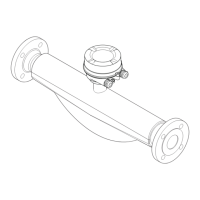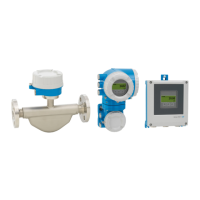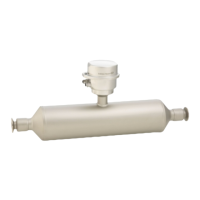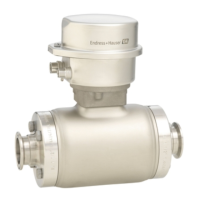Proline Promass 83 PROFIBUS DP/PA Commissioning
Endress+Hauser 79
Triggering warning messages
If required, a limit value can be assigned to all the process/device parameters relevant to the
diagnostic functions. A warning message is triggered if this limit value is exceeded → function
WARNING MODE (7403).
The limit value is entered into the measuring system as an absolute (+/–) or relative deviation from
the reference value → function WARNING LEVEL (74...).
Deviations arising and recorded by the measuring system can also be output via the current or relay
outputs or by means of the fieldbus.
Data interpretation
The way the data recorded by the measuring system is interpreted depends largely on the
application in question. This means that users must have a very good knowledge of their specific
process conditions and the related deviation tolerances in the process, which have to be determined
by the users themselves in each individual case.
For example, when using the limit function it is especially important to know the minimum and
maximum deviation tolerances allowed. Otherwise there is the danger that a warning message is
triggered inadvertently during “normal” process fluctuations.
There can be various reasons for deviating from the reference status. The following table provides
examples and pointers for each of the six diagnosis parameters recorded:
Diagnosis parameters Possible reasons for deviation
Mass flow A deviation from the reference status indicates possible zero point shift.
Density A deviation from the reference status can be caused by a change in the measuring tube
resonance frequency, e.g. from deposits in the measuring tube, corrosion or abrasion.
Reference density The reference density values can be interpreted in the same way as the density values. If
the fluid temperature cannot be kept completely constant, you can analyse the reference
density (density at a constant temperature, e.g. at 20 °C) instead of the density.
Ensure that the parameters required for calculating the reference density have been
correctly configured (functions REFERENCE TEMPERATURE and EXPANSION COEFF.).
Temperature Use this diagnosis parameter to check the functionality of the PT 1000 temperature sensor.
Measuring tube damping A deviation from the reference status can be caused by a change in measuring tube
damping, e.g. from mechanical changes (coating build-up, corrosion, abrasion).
Sensor symmetry Use this diagnosis parameter to determine whether the sensor signals are symmetrical.

